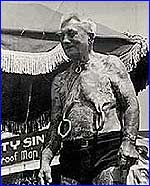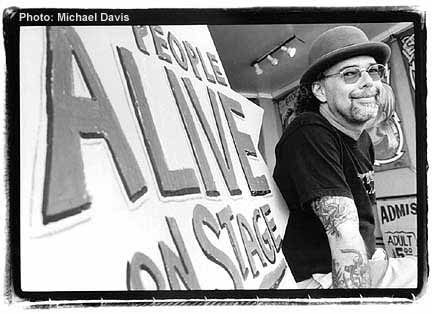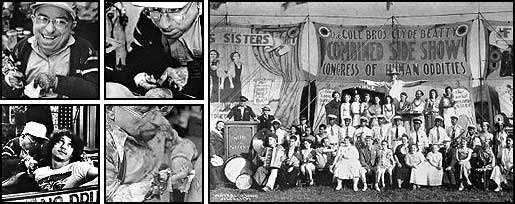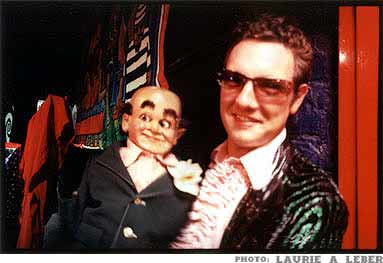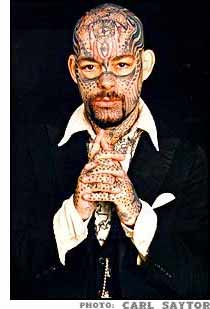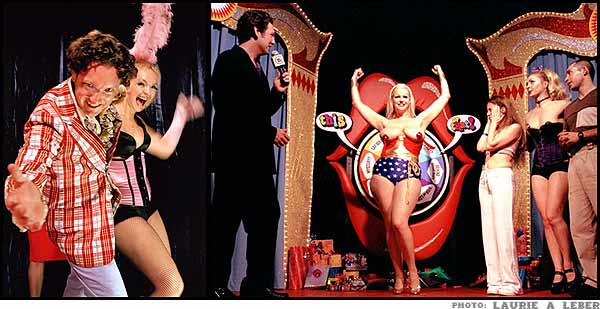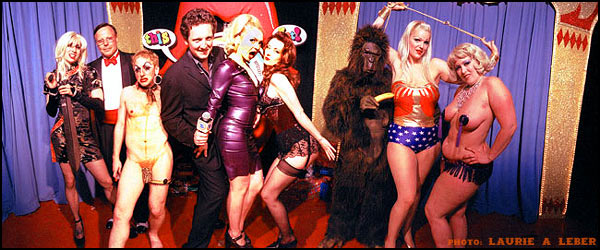
|
“The ACLU … are the most dangerous organization in the United States of America right now. There’s by far. There’s nobody even close to that. They’re, like, second next to Al Qaeda.”
– Bill O’Reilly, FOXNews (6/2/04)
The first time I encountered Bill O’Reilly’s irrational views on body modification was some time ago when he appeared on Last Call with Carson Daly. I was flipping channels and came across the show, and having only heard a little about Bill at the time I decided to stop and get some firsthand experience of him. The thing that has stayed with me from that interview was Bill’s reaction to seeing Carson’s forearm tattoo. With no more provocation than the sight of the tattoo, O’Reilly began to voice his extreme disapproval, tinged with sorrow, over people — particularly young people like Carson — getting tattoos. I do not have a transcript but the phrase ‘hate to see young people ruining themselves’ sticks in my head. While those may not have been his exact words at that time, they are certainly in line with the position he continues to espouse today, often without any prodding.
Besides revealing his prejudice a propos of nothing, the other thing that makes this notable for me is the context. Here is a man (O’Reilly) who as the guest on the show is lamenting how someone younger than he is, with (at the time) two very strong television shows has ruined himself and his future by getting a tattoo. I really think that Bill would do better concerning himself with his own career than that of Carson who could likely rest comfortably on his laurels for the rest of his life already and shows few signs of slowing down. Also, as Carson was quick to point out, this particular tattoo is a tribute to his father. O’Reilly was hardly fazed at this, though it was enough for him to shift off from discussing Carson’s tattoo to tattoos in general and then letting the subject go for the moment. So, when faced with fact that he had ignorantly spouted off about a tattoo that by anyone’s standards would be a beautiful and solemn gesture he did not apologize or reconsider but simply went on pontificating, conveniently overlooking his misstep and the glaring exception to his argument sitting next to him.

Since this incident I have had the chance to hear O’Reilly denigrate tattoos and piercings regularly — most often in his radio broadcasts. When I am on the road I tend to search for talk radio and encounter him on the airwaves frequently. He often lumps being tattooed or pierced in with violent or antisocial behaviors, illiteracy, misogyny, and other undesirable qualities or activities. Sometimes he goes so far as to say that a visible tattoo or piercing is an indication that the wearer is a social degenerate. Frequently, he points to how people with visible tattoos or piercings will not be able to get jobs and thus make any contribution to society. Consider the following quotes:
“Already you see millions of young Americans covered with tattoos, unable to speak proper English, unwilling to read a book or a newspaper. How do you think these people are going to compete in our hypercompetitive economic marketplace? The answer is that millions of them will be unable to compete, and will be doomed to a low wage existence. IBM will not hire you if you have a tattoo on your neck.”
“Thus, we now have 10-year-old boys calling little girls ‘bitches.’ We have 13-year-olds with tattoos and body piercings. We have poor children without parental guidance selling dope and carrying guns.”
My first question to Bill would be, where has this prejudice come from? It seems a bit too overdone, even for a pundit (the job description of which could easily read ‘making gross and unjustified generalizations’), to be simply a symptom of the residual Western puritanical stigma attached to most forms of body modification. Perhaps every pierced and tattooed person that Bill has ever encountered or heard of was an ignorant, violent, leech on society with no redeemable human values. Maybe he somehow managed to overlook all of the good people who are pierced and tattooed — the policemen, firemen, doctors, scientists, and just plain good folks (including ones with neck and hand tattoos that work for IBM — I know of a few) . I won’t deny that there are some truly repugnant people in the world and I will freely admit that some of those people are pierced and tattooed but there is something very important that Bill O’Reilly seems determined not to see:
Heroes have tattoos too.
In fact, if I were to over-generalize my experience in a similar manner I would be saying similar things about people without visible tattoos or piercings. Nearly every person who has ever accosted me for money or that I have observed or experienced acting poorly in public was not notably modified. Conversely, the nicest and most successful people I know are very publicly modified.
And this is why Bill O’Reilly fears me — and probably you too. We rip the carpet out from under his proverbial feet. As much as he would love to paint us all as exceptions that prove the rule, there are just too many of us spread across too many fields and endeavors. And here is a note to Bill and anyone else who wants to tread that path: In real logic, the exception never proves the rule. Furthermore, many tattooed people are not employees because they are employers!
If there is a silver lining to the success that allows O’Reilly spew his ignorant prejudice to such a large media audience it is that it means he will almost certainly never return to his former career as an educator. Yes, as he himself is often quick to point out, O’Reilly is a former teacher. Coming from a family of teachers and having teaching experience myself (ranging from elementary to college level); I shudder to imagine Bill O’Reilly entrusted with care of developing minds. Per his prejudice against body modification and despite claiming to hold personal freedom in high regard he advocates draconian methods in response to students who he describes as disrupting classrooms through body modification and or dress. I can only hope that his replacement was more enlightened and realized that instead of removing someone from the system until they comply by force, that issues of difference, including dress and body choices should be addressed for the benefit of all in the class. On that topic I would suggest Bill (and others) make a careful read of the columns by BME’s own Shannon Larratt on the subject:
As a final note, I will mention that I was contacted to appear as a guest on Bill O’Reilly’s show over a year ago when tongue splitting legislation stories were hot and I was getting the chance to debate some of the legislators, often pointing out their complete lack of any facts on the subject. Bill and his producers seemed interested in the story because they agreed with my take on it being an issue of freedom and pointless legislation of prejudice (The [Modified] Body Politic). I also suspect that the writers of the bill’s political affiliations may have played a role. However, the appearance and story was canceled. I cannot say for sure as to why — I was told that they decided to cut it in order to give more time to another story. Here is an alternate theory: Having contacted me and done some basic research on me based on information I directed them to on my website and BME, the producers and Bill realized that I would not be attacking the tongue splitting legislation but also look to press him on his stance on body modification. Could it be that Bill O’Reilly didn’t want to have to defend himself and give airtime to an educated well prepared opponent with a tattooed face?

because the world NEEDS freaks… Former doctoral candidate and philosophy degree holder Erik Sprague, the Lizardman (iam), is known around the world for his amazing transformation from man to lizard as well as his modern sideshow performance art. Need I say more? Copyright © 2004 BMEzine.com LLC. Requests to republish must be confirmed in writing. For bibliographical purposes this article was first published July 27th, 2004 by BMEzine.com LLC in Toronto, Ontario, Canada.
|



